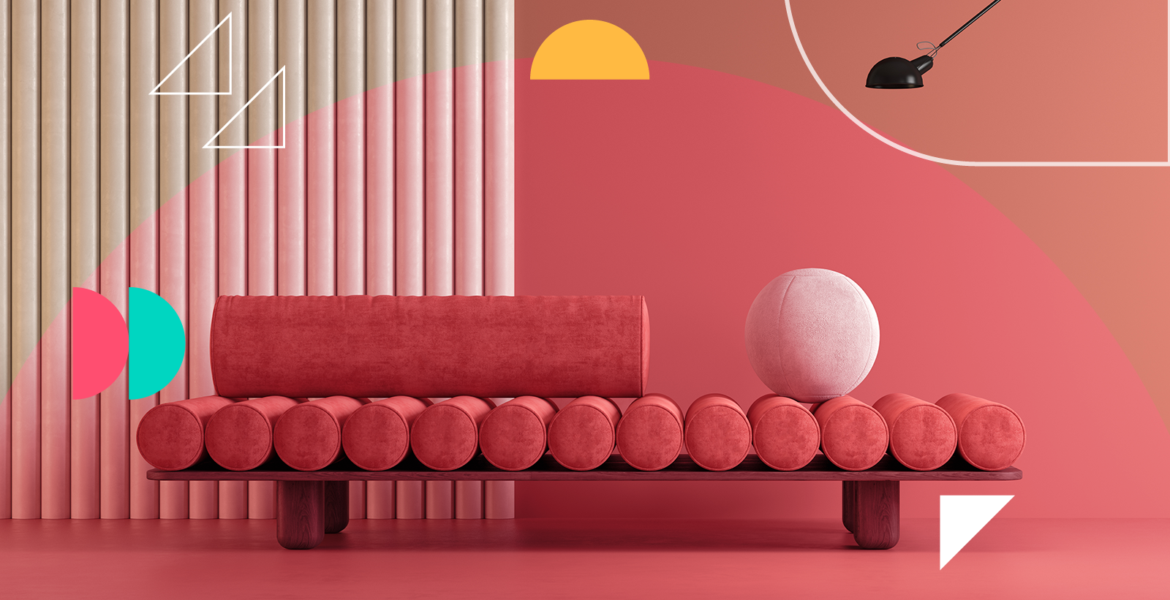The Familiar Trend’s Impact on Luxury Retail and Hospitality Architecture
By Matt Ferebee, Co-Founder and Chief Creative Officer, FerebeeLane
Conventional wisdom tells us that the most effective way to present a luxury brand is, you guessed it, luxuriously. The setting could be classical or contemporary, wildly conceptual or warmly traditional. The basic hypothesis, though, seems clear: it’s best to showcase ultra-premium products and experiences amidst elevated architecture and interiors.
It makes sense, right? Dramatic marbled exteriors with grand brass-and-glass entries. Soaring, ornately embellished ceilings. These statement-making flagship stores and stunning hotel lobbies create a magnificent stage. They signal the remarkable caliber of a brand well before an affluent passerby even crosses the threshold.
That once ubiquitous approach to luxury placemaking may have a new, more subtle counterpart. Take newcomer boutique lifestyle streetwear brand Aimé Leon Dore. Young in elite retail terms at just 10-years-old, Aimé Leon Dore is known as much for extravagant hip hop-meets-preppie-inspired apparel as it is for its lounge-y, laid-back retail vibes.
It’s not that all the grand architecture and interiors have gone away — nor is there any expectation they all will. Fifth Avenue and the Champs-Élysées and New Bond Street still put on a glorious show. This shift isn’t happening all at once, nor is it born of something entirely new. After all, the must-mention darling of any “stealth wealth’ discussion, Loro Piana, just celebrated a full century of quiet couture. Old money has always cherished understated, logo-less cashmere, off-the-radar boutiques, and spa sanctuaries known only to a few.
Those dressed-down upmarket sensibilities have seemingly, until recently, focused more on personal implications rather than commercial, architectural conditions. Most of the talk about ‘quiet luxury’ has explored the evolving relationship between wealthy consumers and ultra-premium products — not necessarily what goes on between affluent consumers and the physical spaces housing those high-end goods and experiences.
The wealthy, and their aspirational followers, are expressing a broadening interest in low-key luxury grounded in authenticity and minimalism. And that’s influencing not only what we buy, but also how and where we buy it.
Is it deeper response to the pandemic? A reflexive turn from slick to sincere? The growing fatigue from social media’s fake perfection? Cynical observers might say these hushed expressions of wealth are just the highest form of “IYKYK” exclusivity. No matter the catalyst, these new cultural indicators are difficult to ignore. Richly detailed architecture will remain a powerful signal of a luxury character and grandeur, but premium brands will no doubt continue to embrace more subtle experiential cues as well.
A NEW TAKE ON ‘ATMOSPHERICS’
Physical spaces have been shaping consumer behavior since the earliest days of organized commerce. It wasn’t until the 1970s, though, that Philip Kotler published his landmark retail study dimensionalizing these spatial factors into a framework he called “atmospherics.” The principles are still evident in today’s experiential brand strategies and multi-sensory consumer touchpoints.
Atmospherics’ key premise is that exterior and interior design, lighting, furnishings and scents all exert significant influence on premium buying decisions. By the 1990s, marketing researchers like Gerry Zaltman and Ale Smidts began using fMRI technology to document the impact of these atmospherics on core consumer behavior. Their work explained how immersing affluent consumers in expansive retail settings, awash in natural light and refined furniture, prompts them to feel more powerful, liberated and receptive. With all this decision-making science in mind, it’s no wonder luxury retail and hospitality design often default to impressive, often lavish architecture and interiors.
Like the palaces and cathedrals that established early cultural patterns about how humans present prized possessions, the world’s finest stores and hotels have long signaled their prominence in society with bold gestures and grand displays. They haven’t necessarily tried to be demure or quiet.
That certainly doesn’t mean all these brands are shouting or screaming. But their architectural approaches are often unapologetically loud and clear: we are exceptional. With that concept crystal clear to high, mid, and low society, this new wave of atmospheric messaging embraces a new challenge: expressing high value in much softer, quieter ways.
NOT LOUD, JUST LUXURIOUS
Brands like Brunello Cucinelli, The Row, and Jil Sander boutiques have always felt like calm, warmly lit galleries. But what was once the hallmark of a handful of restrained outliers, now seems to be a broader pattern language popping up in the architecture and design of both new and established luxury brands. Whether in Mayfair or SoHo or Saint-Germain, examples of the evolution are becoming easy to spot.
Like Aimé Leon Dore, fragrance maverick Le Labo is another luxe brand making quiet waves. Once at the fringe of high-end retail, their stripped-back, Wabi Sabi aesthetic signals honesty and genuine exclusivity to modern affluents eager for both.
Even Peter Marino, the larger-than-life architectural king of luxury retail, seems to be infusing quieter touches into his recent work for houses like Chanel, Dior, Zegna and Louis Vuitton. Although still stunning, and still dramatic, a walk through some of his latest designs reveals details like sitting rooms with vintage furnishings, gallery-like installations, and a range of softer, more natural materials.
A number of luxury hospitality brands have been turning down the volume a bit, too. Aman, considered travel’s high standard for all things quiet and luxurious, continues to expand its portfolio of sublimely understated resorts, including its take on a serene transformation of Manhattan’s landmark Crown Building. The brand’s focus on exquisitely tranquil spaces, deeply personalized service — and in this case, some of the largest residential-style suites in the city — deliver a different kind of elevated experience. But sophisticated simplicity isn’t the only way hoteliers are responding to interest in calmer, quieter luxury.
The Emory, for example, is an masterfully designed, all-suite haven in London’s Belgravia district. In contrast to the charming pomp and circumstance of arrivals at its sister hotel, the lavishly luxurious Connaught, guests enter The Emory through an unassuming entrance tucked away down a cobblestoned alley. There is no grandiose signage. There are no doormen in top hats out front. Instead, the impression at arrival is that of deliberate, perhaps even curious, restraint. The unexpectedly quiet approach is a perfectly warm welcome to the hotel’s impeccable service and contemporary-yet-cozy interiors.
KEEPING AN EAR TO THE GROUND
Of course these are just a few examples of ways this now-familiar trend is beginning to impact luxury structures and settings. Hopefully they offer a snapshot of how some of the world’s leading premium brands are embracing these more understated atmospheric tactics in major markets around the world. The approachable, unpretentious sensibilities. The warmer, calming tones. The more comfortable feel and residential scale.
Only time will tell how prevalent and enduring these architectural and experiential shifts may be, but for now ‘quiet luxury’ — at least in some parts of the premium category — seems to be making quite the statement.
About the Author
Matt Ferebee is Co-Founder and Chief Creative Officer of FerebeeLane, a brand strategy and creative agency that works with premium and luxury brands to engage the discerning affluent consumer. For the past 20 years the agency has collaborated with beloved brands such as Le Creuset, Blackberry Farm, Miele, The Ritz-Carlton, Baker McGuire Furniture, Vail Resorts, Chimay Trappist Beer, as well as numerous other Relais & Châteaux properties, and other luxury brands throughout the home. To learn more about FerebeeLane or our perspective on the discerning affluent consumer please contact Matt Ferebee at matt@fereberelane.com.











